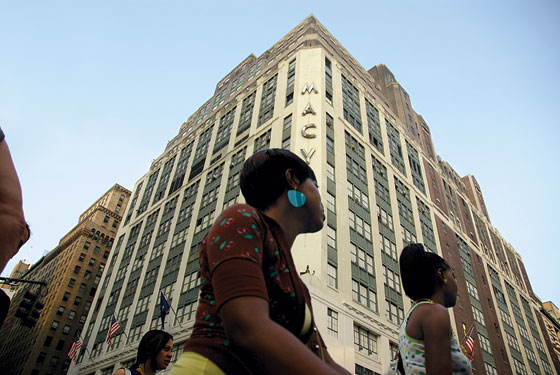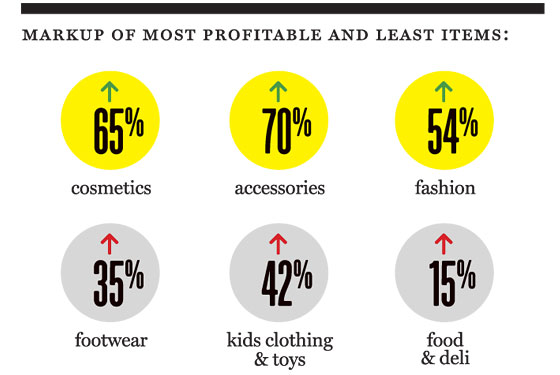
How It Works: Macy’s Herald Square flagship, owned by Federated, profits from the sheer volume of 9,000 pedestrians who walk through Herald Square during a peak hour, a third of whom enter Macy’s. Though less than half make a purchase, about 40,000 shoppers pass through the store daily (up to 120,000 during holidays), making 22,000 daily transactions (62,000 during the holidays). Federated owns the 2.2 million-square-foot Herald Square building, so Macy’s is rent-free. The store keeps 4 million items in stock, refreshed by 15 to 20 daily tractor-trailers.
New York Employees: 3,000 at the store.
Annual Revenue: $600 million ($60 million is profit) at the flagship.
Floor-by-Floor Profit: Macy’s main floor generates about a third of its revenue. “The higher up in the store, the lower the margin tends to be,” says Marshal Cohen, chief analyst for the marketing firm NPD, who also supplied the markups below. Furniture and rugs, expensive items with a low purchase frequency, are on the top floors.
Nonprofits: An estimated $12 million to $24 million a year in theft and lost goods.
Added Value: Macy’s is sitting on a gold mine, so it may change its approach. “New York real estate is so compelling that I think they’re going to make that space more productive for mixed use—office, hotel, condo, and retail, like the Time Warner Center,” says retail consultant Howard Davidowitz, chairman of Davidowitz & Associates.
New Yorkonomics: Macy’s continuing profitability shows the value of the right real estate, which in this case abuts the enormously busy streets that connect the city to Penn Station.
